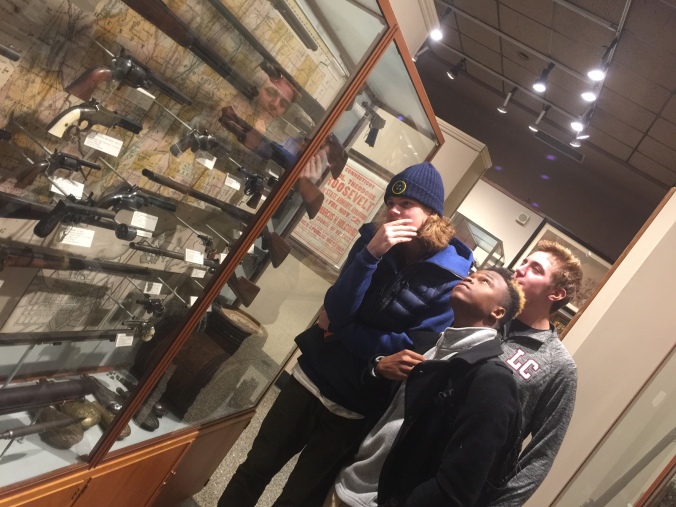Alhasan Barrie
 US history
US history
Mr. Zavisza
12/04/17
Predictions
- I predict that I will learn about the honored Connecticut delegates and get a better understanding of the evolution of the gun industry.
- I predict that I will learn about Connecticut’s most prevalent history and it affect the people of Connecticut today.
- I predict that I will learn about WWI important figures that served a crucial rule in helping win the war.
Throughout US history so far, everything we have learned can be connected to either American identity or how a certain image or idea helped drive America economically, politically, and or socially. Therefore, when I had the blessed and honored opportunity to visit the museum of Connecticut history in Hartford, Connecticut, I could not wait to learn about my predictions. As I entered the historical museum, my goal was to learn about the Connecticut governors, however, I quickly found myself occupied studying the the Connecticut royal charter of 1662 and how the stories/myth surrounding it has made a crucial part of Connecticut’s history and US history. The royal charter was hidden within the hollow of the tree to thwart its confiscation by the English governor-general. The oak became a symbol of American independence and is commemorated on the Connecticut state quarter. In 1935, for Connecticut’s tercentennial, it was also depicted on both a commemorative half dollar and a postage stamp. The oak tree is now a symbol of Connecticut. To further remember the importance of the oak tree, pieces from it is used on the frame to help protect the the royal charter just like it purpose was originally. The royal charter is very much safe in the museum of Connecticut’s history, however, as for oak tree, it was blown down in a violent storm on August 21, 1856 and timber from it was made into a number of chairs now displayed in the Hartford Capitol Building. The desk of the Governor of Connecticut and the chairs for the Speaker of the House of Representatives and President of the Senate in the state capitol were made from wood salvaged from the Charter. So I you ca see, the charter oak has served a pivotal role in Connecticut’s history as well as US history. A piece of Connecticut’s history died when the tree fell, but the tree will never be forgotten.
Questions that came up
what typeof influence did Connecticut serve in WWI
How did the technological advancement of guns help/influence American society
